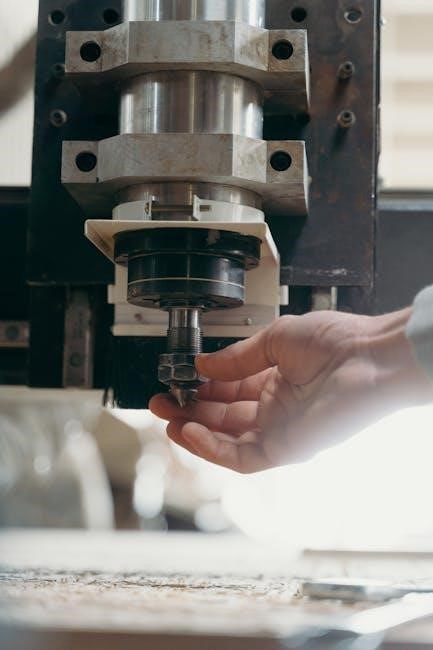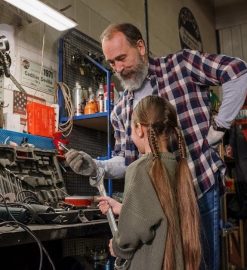manual singer machine

Singer sewing machines are iconic, offering durability and versatility for hobbyists and professionals. With comprehensive manuals and a legacy of innovation, Singer remains a trusted choice for seamless stitching.
Overview of Singer Sewing Machines


Singer sewing machines are renowned for their reliability and versatility, catering to both hobbyists and professionals. With a wide range of models, including manual and electric options, Singer offers machines suitable for various sewing needs. The Singer 15-88, 27K, and 28K models are popular for their durability and ease of use. Many Singer machines come with comprehensive manuals, ensuring users can operate and maintain them effectively. Available in multiple languages, these manuals emphasize Singer’s global reach and commitment to accessibility. Whether for home use or industrial purposes, Singer sewing machines are celebrated for their consistent performance and adaptability, making them a preferred choice worldwide.
History of Singer Sewing Machines
Singer Sewing Company, established in 1851 by Isaac Merritt Singer, revolutionized sewing technology. Singer did not invent the sewing machine but improved upon existing designs, making them more practical and accessible. The company’s early models, like the Singer 15-88, became iconic for their durability and reliability. Over the years, Singer expanded globally, offering a wide range of machines tailored to different needs. Today, Singer remains a leader in the industry, providing both manual and electric machines. Their rich history is marked by innovation and a commitment to quality, ensuring Singer sewing machines continue to be a trusted choice for generations of sewists.

Manual Singer Sewing Machine: Key Features
Manual Singer sewing machines are known for their durability, mechanical simplicity, and ease of use. They feature adjustable stitch lengths, portability, and no need for electricity, making them versatile for various fabrics and sewing tasks.
Understanding the Components of a Manual Singer Machine
A manual Singer sewing machine is a mechanical marvel designed for simplicity and efficiency. Key components include the balance wheel, spool pin, and take-up lever, which control thread tension and stitch formation. The needle bar holds the sewing needle, while the bobbin case manages the lower thread. The machine’s hand crank allows manual operation, providing precise control over stitching speed. Additional features like the stitch length regulator and reverse stitch lever enhance versatility. Understanding these parts is crucial for effective operation and troubleshooting. Referencing the manual ensures proper use and maintenance of each component, maximizing the machine’s performance and longevity.

Step-by-Step Guide to Threading and Setting Up the Machine
Threading a manual Singer machine begins with inserting the bobbin into the bobbin case and pulling the thread through the machine’s tension spring. Next, pass the thread through the take-up lever and guide it through the needle. Tighten the needle screw securely. To set up, place the fabric under the presser foot, aligning the edge with the machine’s edge guide. Turn the hand crank slowly to test the stitch formation. Always refer to the manual for specific models, as slight variations may exist. Proper threading ensures smooth operation and even stitching. Keep the machine on a stable surface and ensure all parts are clean before use.
Safety Guidelines for Using a Manual Singer Machine
Always follow safety guidelines when using a manual Singer machine. Keep loose clothing tied back and avoid distractions. Ensure the machine is on a stable surface and away from children. Regularly inspect for wear and tear.

Essential Safety Precautions Before Operating
Before using your manual Singer sewing machine, read the manual thoroughly. Ensure the machine is placed on a stable, flat surface. Tie back loose clothing and long hair. Keep children away. Unplug the machine when making adjustments or changing needles. Always switch off the machine during threading or bobbin changes to prevent accidents. Regularly inspect the machine for wear and tear. Avoid sewing when fatigued. Use the correct needle type and thread for your fabric to prevent breakage. Keep the work area well-lit and clear of clutter. Follow all safety guidelines to ensure safe and efficient sewing sessions.
Best Practices for Handling the Machine
Always handle your manual Singer sewing machine with care to ensure longevity. Regularly lubricate moving parts to maintain smooth operation. Avoid dropping or applying excessive force, as this can damage internal mechanisms. Store the machine in a dry, clean environment when not in use, preferably in its original case or a protective cover. Clean the machine after each use to prevent dust buildup. Handle the needle and other small parts with precision to avoid accidents. Keep the machine balanced on a sturdy table to prevent vibrations. Use only Singer-recommended accessories to maintain performance. Regularly inspect and tighten any loose screws or parts for optimal function. Refer to the manual for specific handling instructions tailored to your model.

Maintenance and Troubleshooting

Regularly oil moving parts and clean the machine to prevent dust buildup. Check for loose screws and tighten them to avoid damage. Troubleshoot common issues like thread jams or needle breakage by referring to the manual for guidance.
Regular Maintenance Tips for Longevity
Regular maintenance is crucial to ensure your manual Singer sewing machine operates smoothly and lasts longer. Start by oiling the moving parts periodically to reduce friction and prevent rust. Clean the machine thoroughly after each use, removing dust and debris from the bobbin area and feed dogs. Always unplug the machine before cleaning to avoid accidents. Check for loose screws and tighten them to maintain stability. Refer to the manual for specific instructions on lubrication points and cleaning techniques. Proper care will keep your Singer machine in optimal condition, ready for years of reliable service.
Common Issues and How to Fix Them
Manual Singer machines may encounter issues like thread bunching, jammed needles, or uneven stitching. To resolve these, check thread tension and ensure proper threading. Clean the bobbin area regularly to prevent lint buildup, which can cause jams. If the needle is stuck, gently remove it and reinsert it correctly. For uneven stitches, adjust the tension dials or consult the manual for guidance. Lubricate moving parts if the machine feels stiff. Always refer to the provided troubleshooting section in your manual for specific solutions. Regular maintenance and careful handling can prevent most issues, ensuring smooth operation.
Compatible Accessories and Upgrades
Enhance your manual Singer machine with compatible accessories like specialized presser feet, additional bobbins, and high-quality needles. Upgrades can improve functionality and expand stitching capabilities for diverse projects.
Recommended Accessories for Enhanced Sewing
For enhanced sewing experiences with your manual Singer machine, consider essential accessories like specialized presser feet, additional bobbins, and high-quality sewing needles. These tools optimize stitching precision and versatility. Singer offers a range of compatible parts, including zipper, buttonhole, and blind hem feet, designed to expand your creative possibilities. Additional bobbins ensure uninterrupted sewing, while durable needles cater to various fabrics. Accessories like seam rippers and thread cutters also streamline your workflow. Visit Singer’s official website or authorized dealers for genuine, high-quality upgrades tailored to your machine. These accessories not only improve functionality but also ensure long-term performance, helping you achieve professional-grade results with ease.

Upgrading Your Manual Singer Machine
Upgrading your manual Singer machine can enhance its functionality and extend its lifespan. Singer offers a variety of compatible parts and accessories designed for specific models, ensuring seamless integration. From mechanical upgrades like improved tension dials to attachments for specialized stitching, these enhancements can modernize your sewing experience. Additionally, Singer provides optional accessories such as extension tables and storage cases for better convenience. For those seeking advanced features without losing the manual operation, upgrading to models like the Singer 7469 or ONE Plus is recommended. Visit Singer’s official website or authorized dealers to explore genuine upgrade options tailored to your machine, ensuring optimal performance and versatility for years to come.

Singer sewing machines remain a timeless choice, blending durability with versatility; Perfect for hobbyists and professionals, they offer ease of use and maintenance, ensuring lasting creativity and precision always.
Final Tips for Maximizing Your Manual Singer Machine
Regular maintenance and proper care ensure longevity and optimal performance. Always refer to your manual for specific guidance tailored to your machine. Clean and oil the machine regularly to prevent dust buildup and friction. Use high-quality threads and needles to achieve professional results. Experiment with different stitches and techniques to expand your sewing capabilities. Keep essential accessories like extra bobbins and presser feet handy. Practice on scrap fabric before working on final projects to ensure accuracy. Store your machine in a dry, cool place to protect it from damage. By following these tips, you can unlock the full potential of your manual Singer machine and enjoy a rewarding sewing experience.



Leave a Reply
You must be logged in to post a comment.